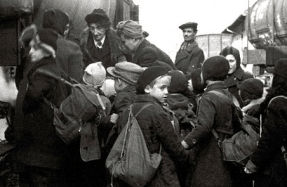THEY’RE COMING! NAZI GERMANY’S D-DAY

With the cancellation in late 1940 of Operation Sealion – the planned Nazi invasion of Great Britain – and the entry into the war of the United States of America in December 1941, Berlin knew it was only a matter of time before the now-Allies landed on continental Europe.
Set out in Führer Directive No 51 on 3 November 1943, Hitler’s answer was to build the Atlantic Wall – der Atlantikwall – hundreds of miles of fortifications that would stretch unbroken from northern Norway all the way down to the Pyrenean border between France and Francoist Spain. It was intended to be a truly vast scheme that would create an impregnable barrier of 15,000 strongpoints manned by a third of a million men. The paramilitary Organization Todt – OT for short – was put in charge and soon 14 fortress engineer construction battalions, four regular engineer construction battalions, five rock drilling companies and two minelaying companies were working on building the Wall in France alone. Hundreds of thousands of workers were involved – many of them forced-labourers. At full pitch this host were pouring 769,000 cubic metres of reinforced concrete a month, and in total they laid a staggering 13,134,500 cubic metres. A whole new category of infantry divisions were established to garrison the new defences; the so-called ‘fortress’ or ‘static’ divisions – 15 of them in 1941 alone. Hundreds of guns were emplaced, such as the giant 380mm ship-killers of the Batterie Todt at Cap Gris Nez, capable of hitting the English coast over 20 miles distant. By the early summer of 1944 the Wehrmacht had 59 divisions comprising 850,000 men in western Europe, with 1,552 panzers and assault-guns, including several hundred Panthers and Tigers – some of the finest fighting vehicles of
You’re reading a preview, subscribe to read more.
Start your free 30 days



